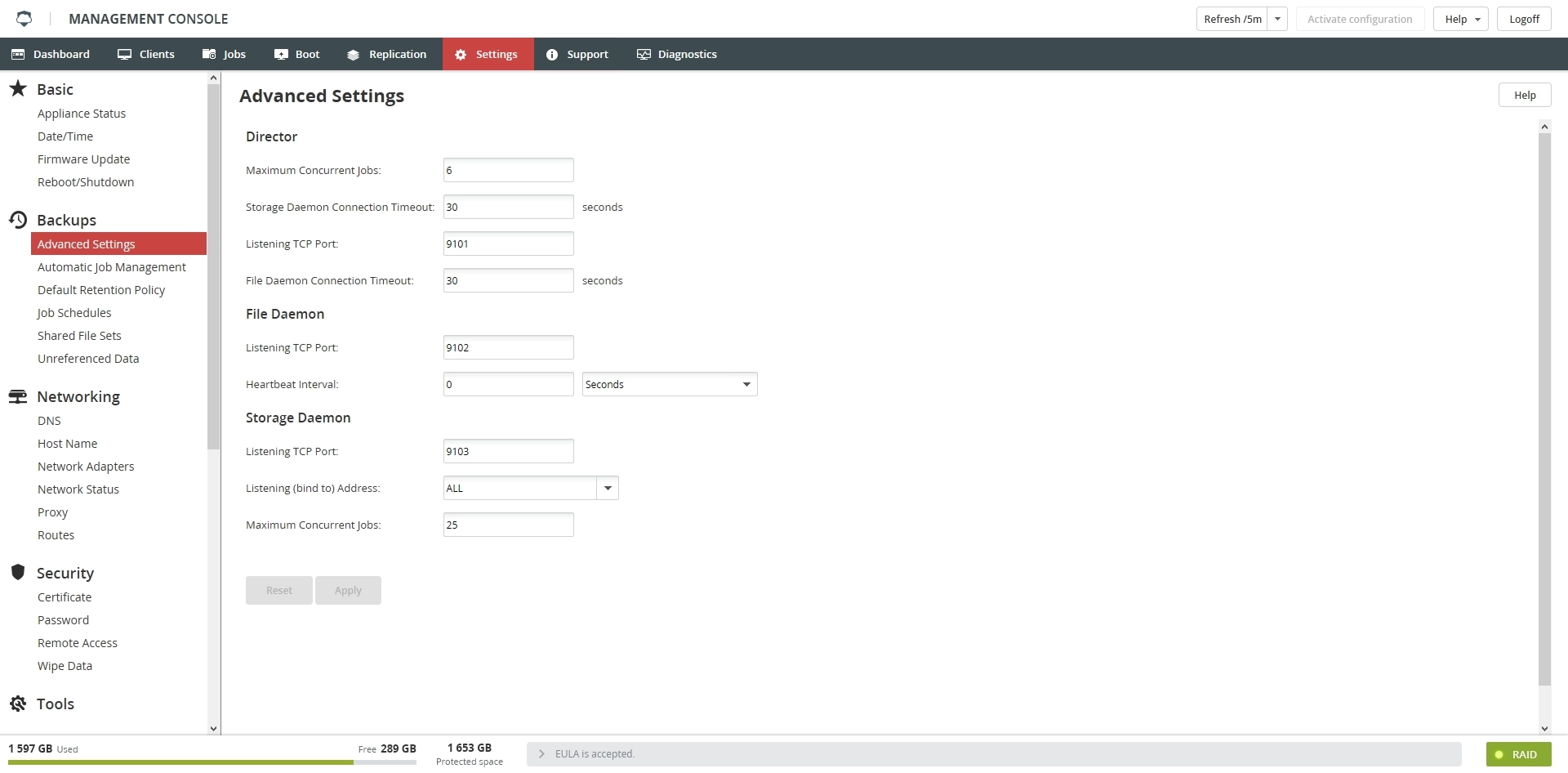Advanced Settings
The Advanced Settings section is visible in the advanced view mode only. To show it, click Help › Show Advanced on the upper right.
Overview
The Advanced Settings section provides an interface to some settings used by the system backup program.
Usually, the settings on this page should not require any changes.

After you make any changes, click Apply to save your changes.
File Daemon
| Setting | Description |
|---|---|
| Listening TCP Port | The TCP port that the backup system Director binds to. The default is 9102. This port has been registered, so conflicts with another application are unlikely. If you encounter a conflict in the network environment, you can change the port specification. |
| Heartbeat interval | This setting defines an interval of time. For each heartbeat that the client agent receives from the Storage daemon, it will forward it to the Director. In addition, if no heartbeat has been received from the Storage daemon and thus forwarded the File daemon will send a heartbeat signal to the Director and to the Storage daemon to keep the channels active. The default interval is 0, which disables the heartbeat. This setting affects only the client agent running on appliance itself. It is particularly useful, if you have a router that does not follow Internet standards and times out an inactive connection after a short duration. |
Storage Daemon
| Setting | Description |
|---|---|
| Listening TCP Port | The TCP port that the backup system Storage Daemon binds to. The default is 9103. This port has been registered, so conflicts with another application are unlikely. If you encounter a port conflict in your network environment, you can change the port specification. |
| Listening (bind to) Address | The IP Address that the backup system Storage Daemon will bind to. Normally the backup system Storage Daemon will bind to all addresses present on appliance. To limit the daemon to one of the two network interfaces, select the IP address of the appropriate network interface. |
| Maximum Concurrent Jobs | The maximum number of backup jobs that the backup storage system will accept simultaneously. This number should be equal to or greater than the Maximum Concurrent Jobs for the director. |
